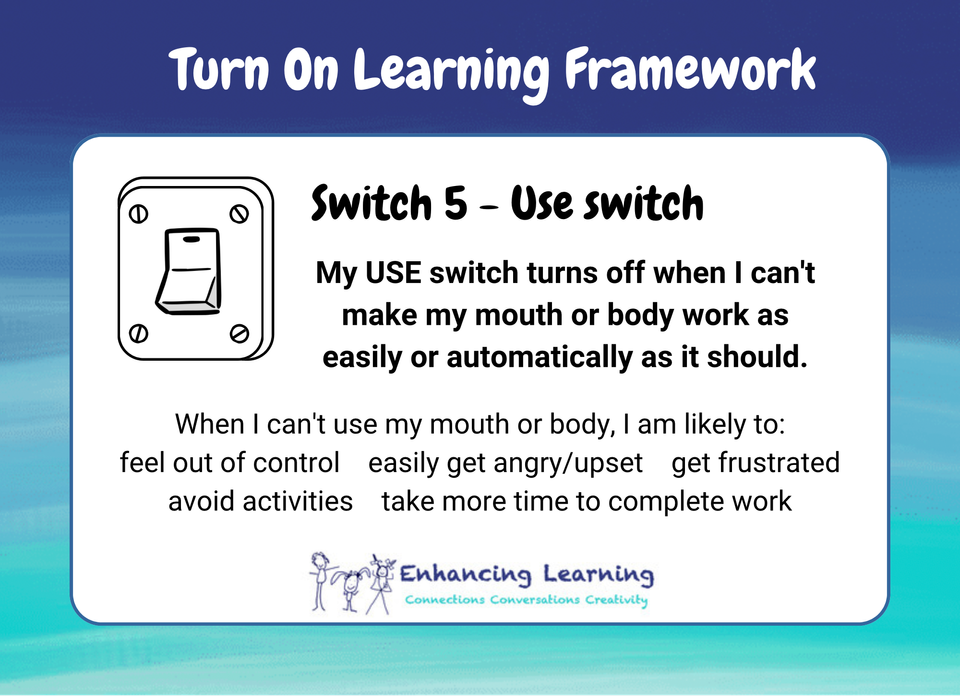A child's use switch is described as fragile when they are unable to use their hands, body, speech or verbal communication in an effective and easy way to engage in the typical activities expected for their age or the classroom year.
Showing our knowledge relies heavily on having an effective use switch for verbal or written responses. Children with a fragile use switch can find it physically exhausting or ineffective when they are attempting to communicate their ideas verbally or in writing. Their actual knowledge may be underestimated because of these difficulties. They can be frustrated that their movements and/ or spoken sentences are not accurate or easy to achieve.
Enhancing Learning Assessors look for children with posture differences such as 'w' sitting, poor navigation of the classroom environment, and difficulty with typically expected activities. We look for children becoming angry when engaging in complex movements or being excessively silly. Speech and spoken language samples are collected and compared to expectations for their age.
The Use switch is potentially one of the least recognised are impacting significantly on a child's learning. While some children may experience a delay in their development of being able to use their words or body effectively, there are other conditions that can have lifelong implications including Developmental Coordination Disorder, Childhood Apraxia of Speech and Developmental Language Disorders.
Read more here about how the Use Switch affects the Safe Switch
This explainer video gives some insight into how the brain and body interactions are affected by the condition of Childhood Apraxia of Speech to show how a fragile Use Switch sabotages a child's ability to express themself.
